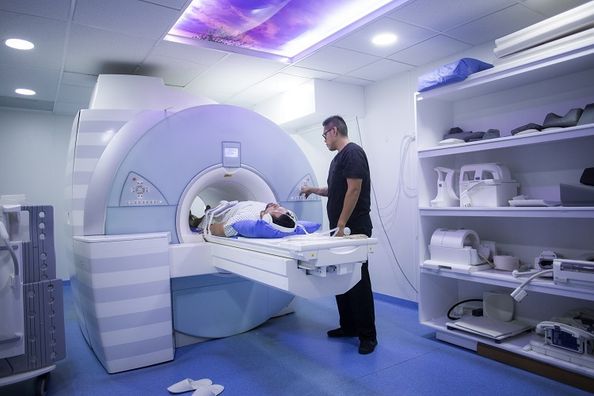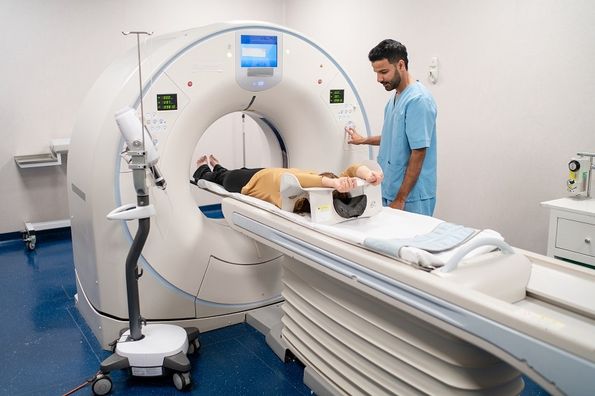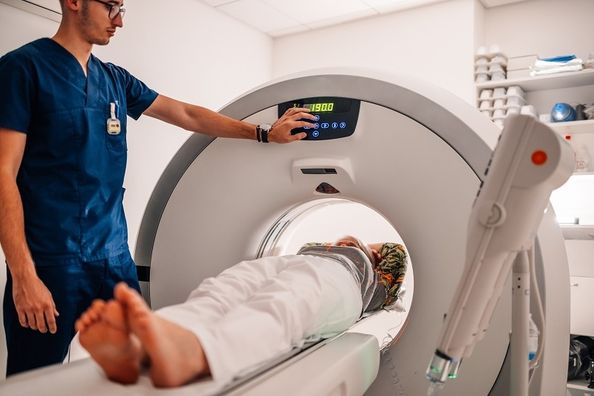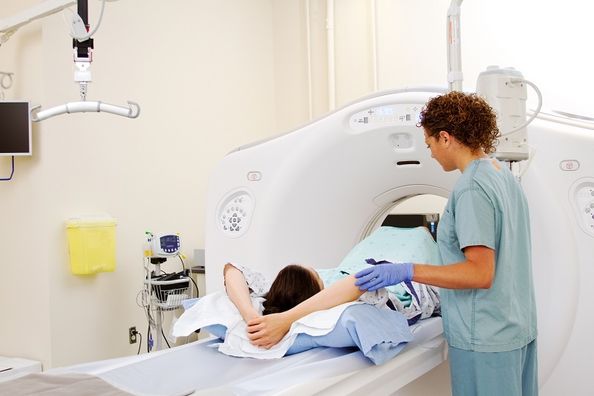The terms “closed” and “open” generally refers to the geometry of the magnets used in MRI scanners.
The “closed” magnet configuration refers to a tube-like tunnel which was the original shape of most MRI scanners. All high-field superconducting MRI scanners (1.0 to 3 Tesla-Tesla being a measure of the strength of the magnetic field) are generally considered a part of this type.
Open magnets were developed in the 1990’s, and typically consist of two large, round, horizontally oriented metal discs which are the poles of the magnet with the patient lying on a table between the poles. These magnets have no sides and are thus “open”. “Open” magnets have a magnetic field strength of 0.2 to 0.3 Tesla.
In both “closed” and “open” magnets, there are differences and trade-offs. Extremely claustrophobic patients often prefer an “open” MRI environment. Previously, larger patients could only fit in “open” MRI scanners. “Closed” MRI scanners typically scan patients faster than “open” MRI scanners. In addition, “closed” MRI scanners with high field strengths are capable of achieving greater resolution and thinner slices for viewing smaller parts of a patient’s anatomy and offer a more precise diagnosis. Advanced techniques to detect early stroke, subtle multiple sclerosis plaques and cartilage degeneration in the knee are available only on high-field “closed” scanners, as well as the ability to perform specialized exams such as breast and prostate MRIs.
Patients should be aware of the differences in quality and scanning time and the potential that another scan might be required by their physician if an exam is acquired with a traditional “open” scanner. Due to the lower image quality produced by the “open” scanners because of the lower field strength magnet, an exam may need to be repeated on a “closed” or high-field scanner to accurately diagnose the patient’s problem. This results in patient inconvenience as well as additional cost for a second scan.
For a while, there was an increase in use of “open” MRI’s due to the “closed” scanners being more claustrophobic for patients. Newer scanners have since been designed with a substantially shorter bore or “tube” than the older scanners to increase patient comfort and reduce patient anxiety. These magnets are flared at the ends and wider than the older scanners reducing that “closed in” feeling.
DMG has three scanners of this design utilizing a 60cm bore. We have also recently added three additional scanners with the widest available bore opening available for medical imaging. These measure 70cm in diameter with a patient weight limit of 500 – 550 lbs., enhancing the “open” concept and making it possible for patients who have never been able to be scanned before to lie inside comfortably. These short bore magnets are also designed with superior ventilation and lighting systems, allowing more light and air to circulate around the patient during scanning.
In addition to the physical structure of the scanners reducing patient anxiety, DMG’s MRI technologists and support staff are experienced in dealing with patients who may be nervous or anxious. Our staff can comfort and relax patients, talk them through the scan and, if needed, sit with the patient and hold their hand. Music can sometimes be listened to during a scan for relaxation purposes.
I just had an MRI last month on an “open” scanner because I’m claustrophobic. Now my doctor wants the exam repeated on a high-field magnet. What does that mean?
“Open” magnets have a magnetic field strength of 0.2 to 0.3 Tesla while high-field superconducting MRI scanners have a magnetic field strength of 1.0 to 3T (or Tesla-Tesla being a measure of the strength of the magnetic field). These high-field magnets are capable of achieving greater resolution and thinner slices for viewing smaller parts of a patient’s anatomy, offering a more precise diagnosis. Most advanced techniques and exams are available only on high field scanners. Newer scanners have been designed with a substantially shorter bore or “tube” than the older scanners to increase patient comfort and reduce patient anxiety. These magnets are flared at the ends and wider than the older scanners reducing that “closed in” feeling. These short bore magnets are also designed with superior ventilation and lighting systems, allowing more light and air to circulate around the patient during scanning.
Due to the lower image quality produced by the “open” scanners because of the low field magnet, an exam may need to be repeated on a “closed” or high field scanner to accurately diagnose the patient’s problem or increase the physician’s ability to treat a patient when an “open” scan doesn’t show sufficient information.
Health Topics:







